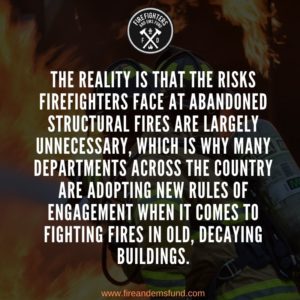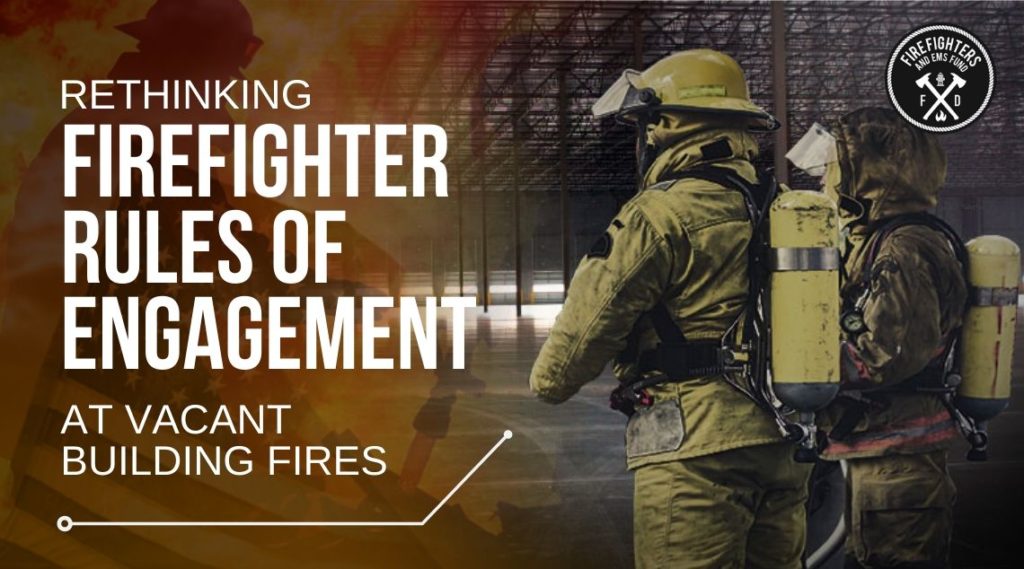Recently, we covered how new building methods and materials are making structural fires more dangerous. New synthetic building materials and cost-cutting building methods all contribute to the risk of larger, more toxic fires. On the other end of the spectrum, old and abandoned buildings pose as much, if not more risk to firefighters. Here we will take a look at some of the statistics surrounding the risk of fire in abandoned buildings and what fire departments across the country are doing to combat the problem.
An unnecessary risk
In 2018, the National Fire Protection Association released an extensive study examining fires in vacant buildings. The findings were astounding and illustrate the real and present need to address the issue head on. The study examined fire emergencies and firefighter injuries across the United States between 2011 and 2015, and found that over 3,000 firefighters were injured per year while responding to fires at abandoned structures. That amounts to 13% of total firefighter injuries in that time period.

The reality is that the risks firefighters face at abandoned structural fires are largely unnecessary, which is why many departments across the country are adopting new rules of engagement when it comes to fighting fires in old, decaying buildings.
Changing the rules of engagement
In Flint, Michigan, the fire department is adopting new rules of engagement after a study conducted by the department found that over 60% of firefighter injuries in the city resulted from responding to vacant building fires. In fact, vacant building fires amounted to 40% of all fires in the city. Other key findings in the study out of flint included:
- 73% of the cost from fireground injuries resulted from fires at vacant structures
- 93% of the cost of injuries at fires in vacant structures occurred in buildings that were unsecured when firefighters arrived
In response to the study’s findings, the Flint Fire Department implemented new, more defensive rules of engagement when responding to vacant building fires. Flint Primary Captain Andy Graves, who led the study, said that the new rules of engagement were met with resistance by the city’s firefighters at first, but are now largely accepted and followed. “Some of the firefighters are used to and were trained to move forward and attack fire, not to pull back and use defensive measures,” Graves said. “But once they saw the big picture and what was happening, it became pretty well accepted.”
While addressing the issue of vacant or abandoned buildings remains a local issue in communities nationwide, there seems to be a shift in attitude about how these fire emergencies should be responded to. Most fire departments are realizing that traditional rules of engagement are not appropriate when responding to these types of fires. It’s just not worth the risk for firefighters.









